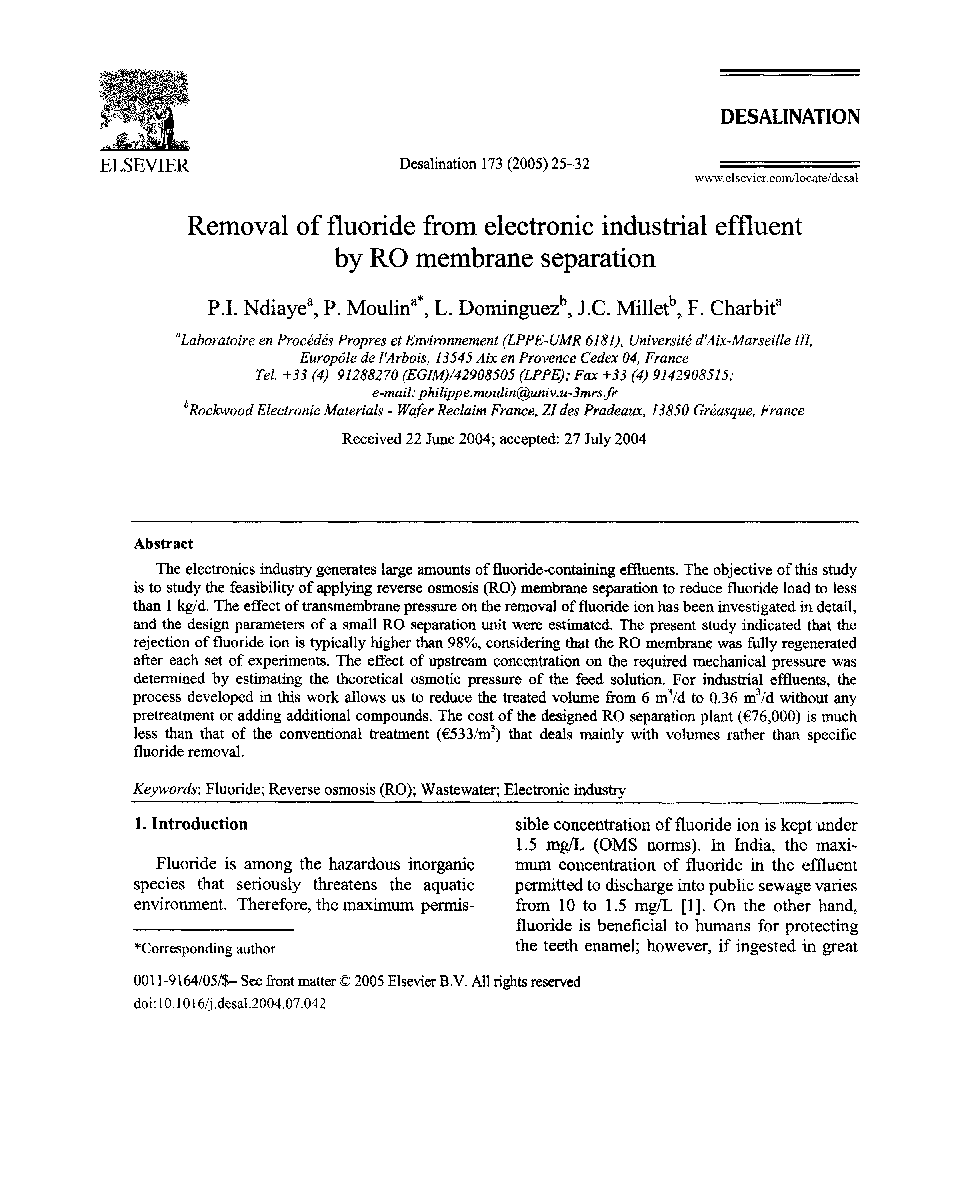| Article ID | Journal | Published Year | Pages | File Type |
|---|---|---|---|---|
| 10386258 | Desalination | 2005 | 8 Pages |
Abstract
The electronics industry generates large amounts of fluoride-containing effluents. The objective of this studyis to study the feasibility of applying reverse osmosis (RO) membrane separation to reduce fluoride load to less than 1 kg/d. The effect of transmembrane pressure on the removal of fluoride ion has been investigated in detail, and the design parameters of a small RO separation unit were estimated. The present study indicated that the rejection of fluoride ion is typically higher than 98%, considering that the RO membrane was fully regenerated after each set of experiments. The effect of upstream concentration on the required mechanical pressure was determined by estimating the theoretical osmotic pressure of the feed solution. For industrial effluents, the process developed in this work allows us to reduce the treated volume from 6 m3/d to 0.36 m3/d without any pretreatment or adding additional compounds. The cost of the designed RO separation plant (â¬76,000) is much less than that of the conventional treatment (â¬533/m3) that deals mainly with volumes rather than specific
Related Topics
Physical Sciences and Engineering
Chemical Engineering
Filtration and Separation
Authors
P.I. Ndiaye, P. Moulin, L. Dominguez, J.C. Millet, F. Charbit,
